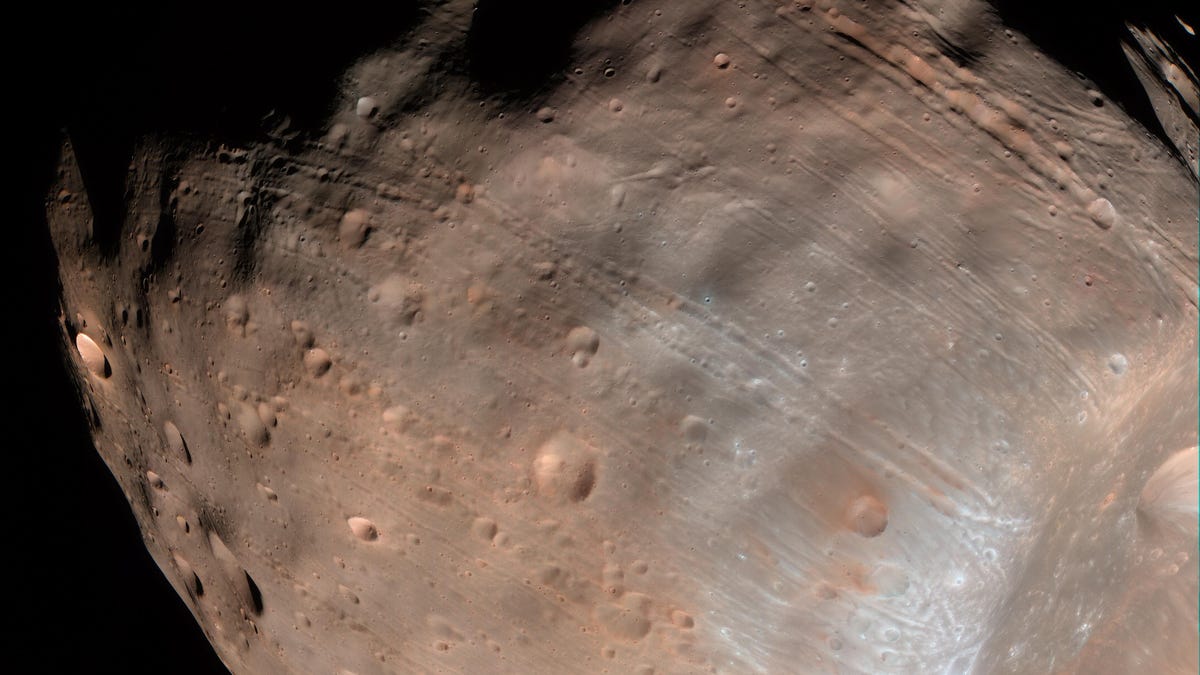Move over, Saturn, Mars might get its very own rings
Sure, Saturn has the most bling thanks to its rings. But an upcoming cosmic event could soon bring it some competition from the Red Planet.
It might take another 30 to 50 million years, but according to NASA, the Martian moon Phobos will get pulled apart by stress. In fact, scientists have spotted grooves on the surface of the moon that they believe indicate it's already beginning to fail.
New research from the University of California at Berkeley, published Monday in Nature Geoscience, indicates that when the moon does indeed blow apart, it will happen quickly and it could add a ring system to the Red Planet.
"If you were standing on the surface of Mars, you could grab a lawn chair and watch Phobos shearing out and spreading into a big circle," Benjamin Black, one of the researchers, told Nature.
Phobos, one of Mars' two moons, is getting closer and closer to the main planet. In fact, right now, it's just 3,700 miles (6,000 kilometers) from the planet's surface. For comparison, our moon is about 238,900 miles (384,472 kilometers) from the Earth's surface. As Phobos continues to fall toward the planet, there are two possibilities -- it could either crash into Mars, or break up and form rings.
The researchers concluded that the second case is more likely because they don't believe the center of the moon is held together very well.
"We conclude that Phobos' inward migration will culminate with division of the satellite according to its internal distribution of strength and damage," they say in their paper. "The most damaged regions will disperse into a planetary ring."
Once the ring is formed, Black and his colleagues say it should last anywhere between 1 million and 100 million years. Initially, they say, if the moon breaks up quickly and completely enough, the mass of the rings would rival that of Saturn's major rings. The ring system would eventually lose density, however, as its material spreads out.
(Via R&D Magazine)


